Epipactis helleborine
A weedy, non-native orchid
Epipactis helleborine bastard hellebore
This perennial member of the orchid family is native to Europe, Asia and North Africa, but has spread to North America, primarily in the Northeast, but with scattered populations on the west coast and other areas. It is sometimes called the weed orchid or weedy orchid because it not only grows in woods and hedge banks, but also along roadsides, disturbed areas and in urban and suburban areas. It seems to do well around human habitation because the wasps that serve as its major pollinator is abundant in these areas.
This species blooms from July to September producing up to 50 flowers in drooping clusters called racemes. It is not a colorful flower. The sepals and upper petals are dull green in color. The lower petal (lip or labellum) is pale purple or red and much shorter than the other petals. It is divided into two parts that curl inwards to form a purple/brown sac. The nectar of these flowers seems to have an intoxicating effect on the wasps. This is apparently because it contains minute amounts of oxycodone and other opioids.
The plant can grow up to 36 inches tall. It has broad dull green leaves that are strongly ribbed and flat. The leaf base clasps the stem. The stem is covered with fine hairs. This orchid is known to need a partnership with one of several species of soil fungi in order to survive.
Habitat & Range
Woodlands, woodland edges, shady roadsides.
Present throughout the state.
Range: Found in North America, primarily in the Northeast, but with scattered populations on the west coast and other areas.
| EMP: | UPL |
|---|---|
| NCNE: | UPL |
Phenology
Flowers June to August.
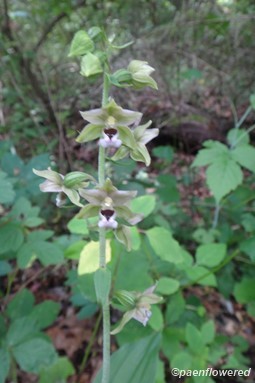
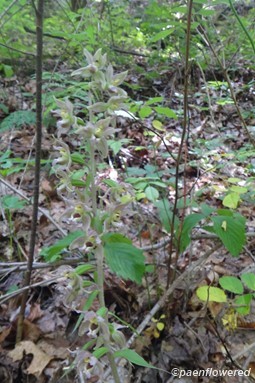
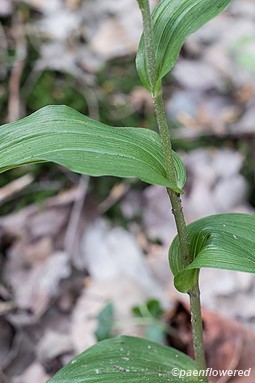
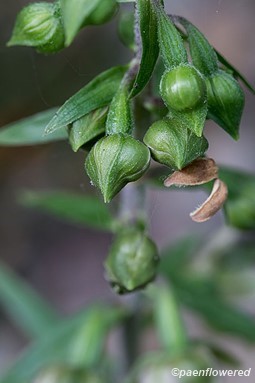



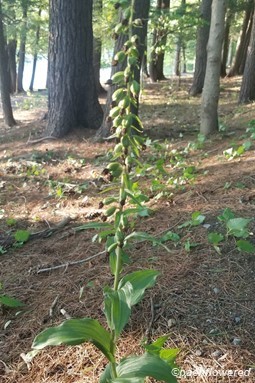
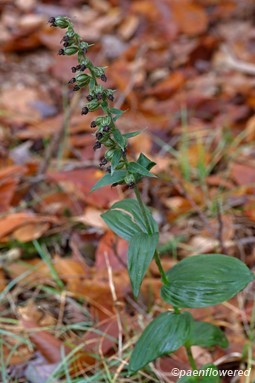

Comments
Have you spotted this plant in your area? We'd love to hear about your experience! Share your comments or questions about the plant below. Comments are moderated before posting.